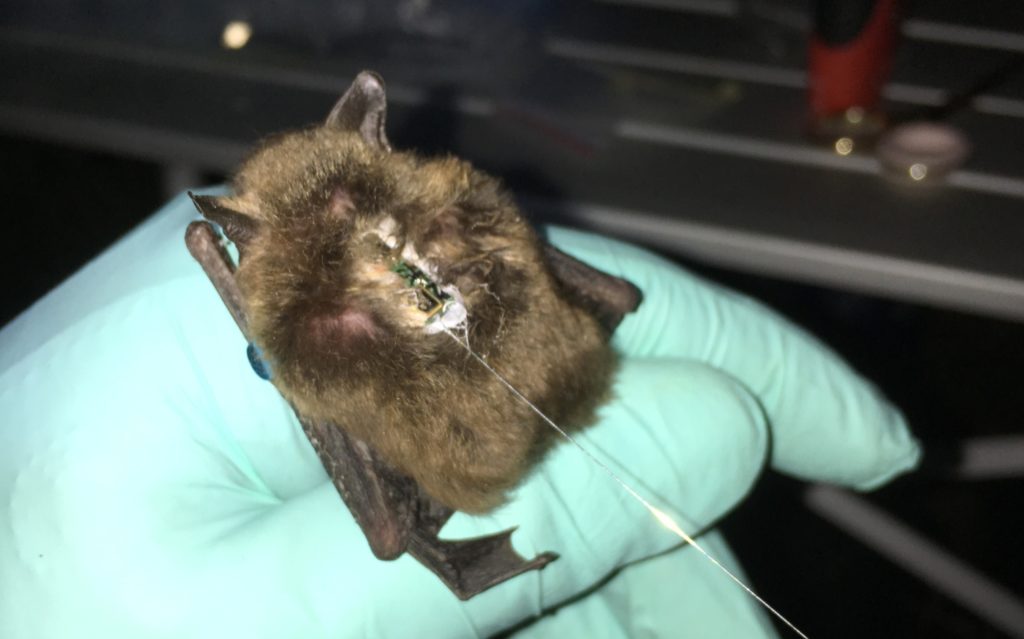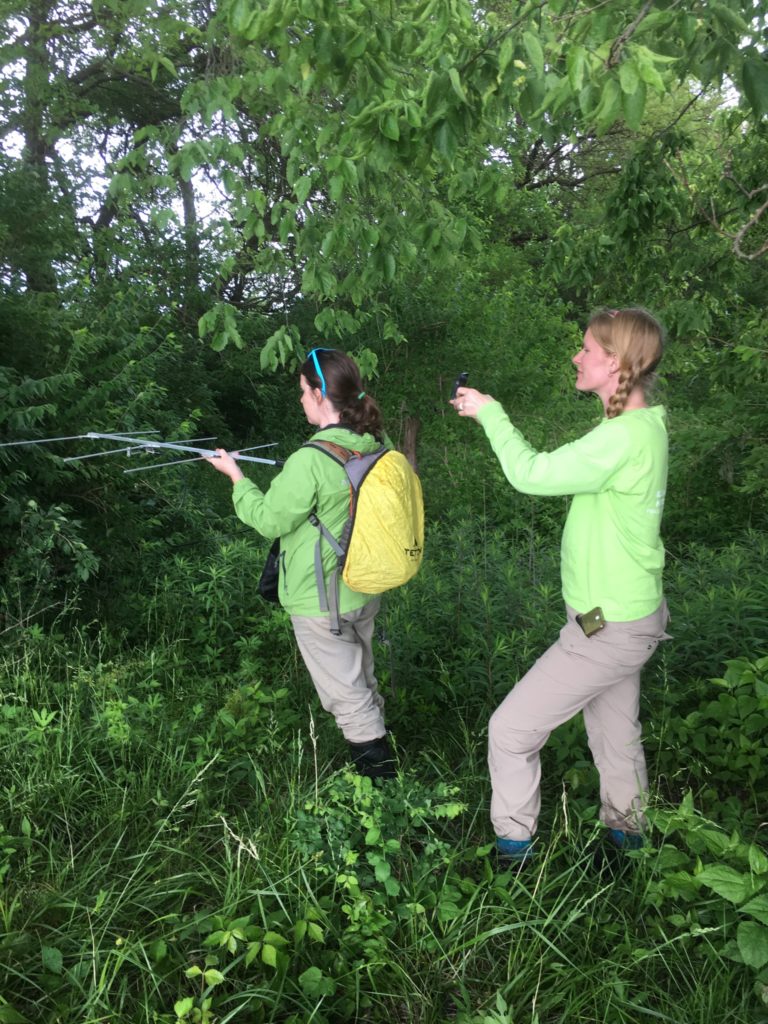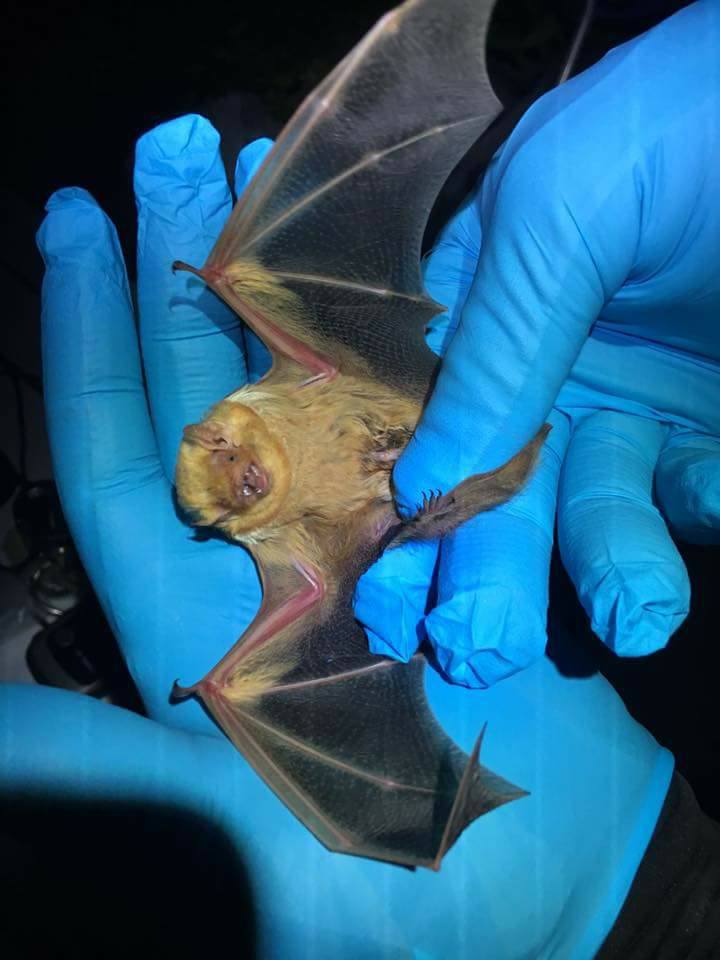
A radio transmitter temporarily glued to a captured bat using surgical glue that will dissolve after several days.
The beginning of September marked the end of the field season for the Illinois Bat Conservation Program (IBCP) as we finished work at our final, northern-most field site. As fall begins, Illinois bat species begin to prepare for winter migration and/or hibernation and their activity patterns, habitat use, and presence in the state change as well. Concluding research before these changes begin is important so that we can reduce seasonal variation making comparisons from our different field sites possible. By conducting our field work during the summer, we study bats when they are active in their summer ranges.
In collaboration with Illinois Department of Natural Resources, the IBCP gathered important information on our bat species through a summer of acoustic monitoring, mist netting, radio telemetry, and emergence counts. IBCP staff and INDR Natural Heritage biologists set up acoustic monitors at 20 sites across the state, from the southern end of Illinois to the Wisconsin border, in our second summer of acoustic data collection. At each site, 3-4 acoustic detectors were left in place for at least 4 nights, collecting an enormous amount of information on the bats of our state. Placed in different habitat types, these detectors gathered information on species distribution across the state and habitat used by each species.

IBCP staff tracking a radio-tagged bat back to it’s roost tree
This summer IBCP field crews mist netted for 42 nights at 10 study areas across Illinois, on both private and public lands. During mist netting, bats were captured for identification and demographic data, including age, sex, reproductive condition, weight, and health before being released. Our field crews captured 101 bats from 7 species. The most common species captured were big brown bats, Eptesicus fuscus, eastern red bats, Lasiurus borealis, and the endangered Indiana bat, Myotis sodalis. To better understand bat dietary preferences, we collected guano pellets from the bats we captured during mist netting. Environmental DNA (eDNA) analysis will be used to identify the digested insect species that make up each pellet, giving us important information on the dietary preferences of the bat species we have captured. One objective of this summer’s work was to study roosting behavior in Indiana bats, Myotis sodalis. When female Indiana bats were captured in our mist nets, radio transmitters were temporarily mounted to their backs so the bats could be tracked back to their roost trees. Studying characteristics of the roosts and surrounding forests helps us understand Indiana bat habitat preference. IBCP staff conducted emergence counts at 14 roost trees. Counting bats as they emerge from each tree helps us to get an idea of local colony population size.

Eastern red bat being identified by IBCP staff.
With this season of field work completed, the IBCP will begin to analyze the data gathered this summer. Working through the acoustic calls collected, we will begin to identify which bat species were present at each of our sites. Comparing this information to the habitat present at each site, we will continue to develop our growing knowledge of bat habitat preferences across Illinois. The acoustic data will also be submitted to the North American Bat Monitoring Program for analysis on a continent wide scale. Analyzing the roost tree information from this summer’s radio tracking efforts, we can begin to understand which tree species and forest types are most important in conservation efforts to protect the endangered Indiana bat here in Illinois. And of course, we will begin to prepare for our third season of field work in 2018 as we continue to study the bats of Illinois.

